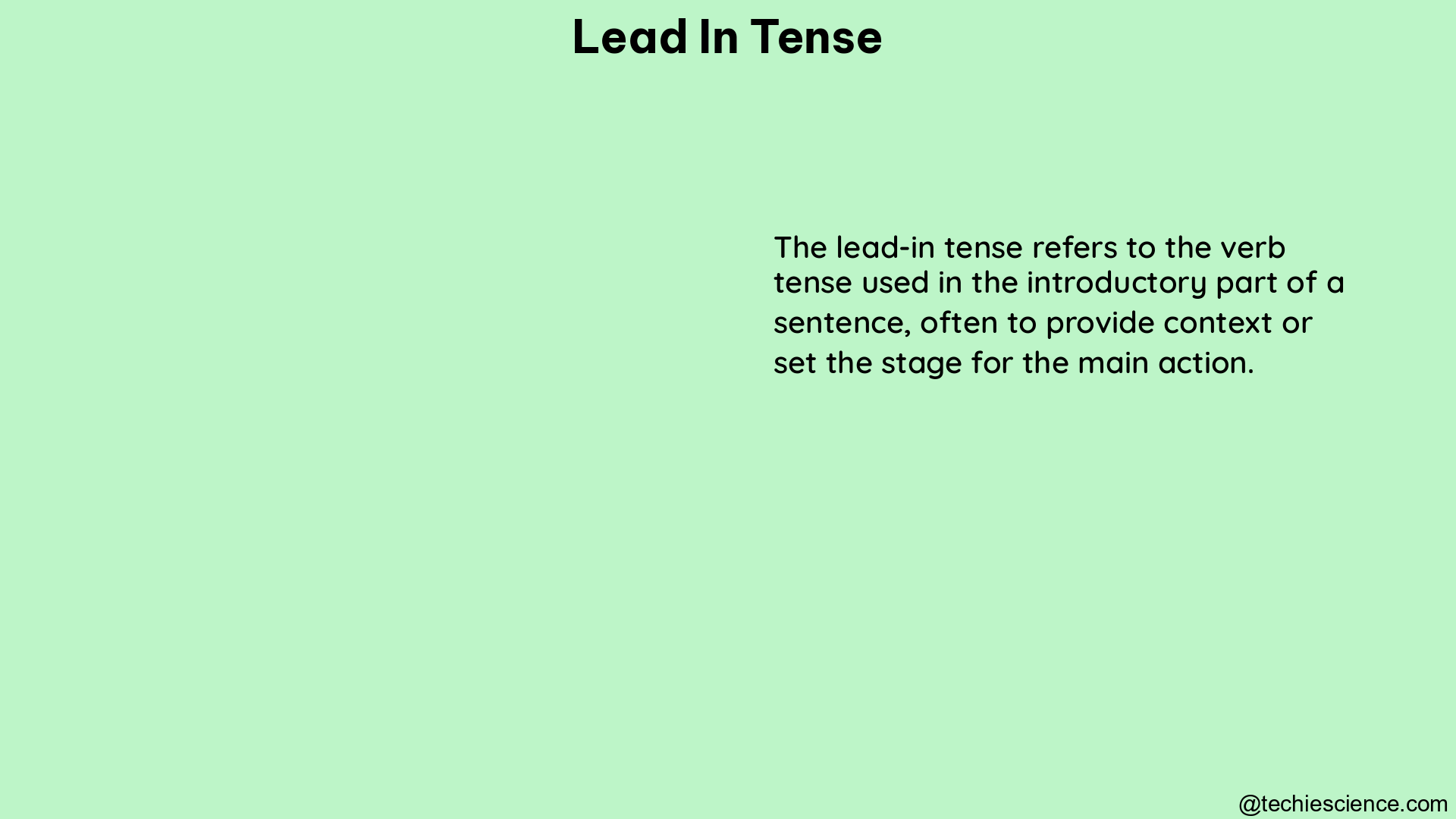The verb “lead” can be quite confusing due to its multiple meanings and pronunciations. This comprehensive guide will provide you with a detailed explanation of the grammatical specifications and examples for “lead” in different tenses, ensuring you have a thorough understanding of this versatile verb.
Present Tense
In the present tense, the verb “lead” is pronounced as “leed” and means to guide, direct, or be in charge. For example:
- “She leads the group with confidence and poise” (referring to showing the way).
Past Tense

The past tense of the verb “lead” is “led,” pronounced as “led,” and it means to have guided, directed, or been in charge. For example:
- “Her mother led her into the kitchen to show her how to cook the chicken” (referring to guiding).
Past Participle
The past participle form of the verb “lead” is also “led,” pronounced as “led,” and it is used in perfect tenses. For example:
- “He has led the team to nationals five years in a row” (referring to having guided).
Perfect Tenses
Present Perfect Tense
The present perfect tense of the verb “lead” is “have led,” pronounced as “have led,” and it indicates that the action of guiding started in the past and continues up to the present. For example:
- “I have led the team to victory several times” (referring to continuous guidance).
Past Perfect Tense
The past perfect tense of the verb “lead” is “had led,” pronounced as “had led,” and it indicates that the action of guiding was completed before another action in the past. For example:
- “By the time we arrived, they had led the parade” (referring to completed guidance).
Future Perfect Tense
The future perfect tense of the verb “lead” is “will have led,” pronounced as “will have led,” and it indicates that the action of guiding will be completed at a point in the future. For example:
- “By next year, I will have led the team for five years” (referring to future guidance).
Continuous Tenses
Present Continuous Tense
The present continuous tense of the verb “lead” is “am leading,” pronounced as “am leading,” and it indicates that the action of guiding is ongoing. For example:
- “I am leading the team through this project” (referring to ongoing guidance).
Past Continuous Tense
The past continuous tense of the verb “lead” is “was leading,” pronounced as “was leading,” and it indicates that the action of guiding was ongoing at a point in the past. For example:
- “I was leading the team when the crisis occurred” (referring to ongoing guidance in the past).
Future Continuous Tense
The future continuous tense of the verb “lead” is “will be leading,” pronounced as “will be leading,” and it indicates that the action of guiding will be ongoing at a point in the future. For example:
- “I will be leading the team on the new project” (referring to future ongoing guidance).
Other Meanings of “Lead”
The word “lead” can also refer to a type of metal or a dog’s leash, pronounced as “led.” For example:
- “His legs felt heavy, like they were made from lead” (referring to the metal).
Key Points to Remember
- The present tense verb is “lead” (pronounced as “leed”), while the past tense and past participle is “led” (pronounced as “led”).
- The word “lead” (pronounced as “led”) can also refer to a type of metal or a dog’s leash.
References
- MasterClass: Led vs. Lead
- Grammarly: Led vs. Lead
- University of Nebraska-Lincoln: The Difference Between “Lead” and “Led”
- WordReference: Lead Verb Conjugation
- Collins Dictionary: Lead Verb Conjugation

Hi…..I’m a graduate with a Bachelor’s degree in English Literature. I wish to do a Masters in the same field someday and continue my career in Academia.
Let’s connect through LinkedIn: